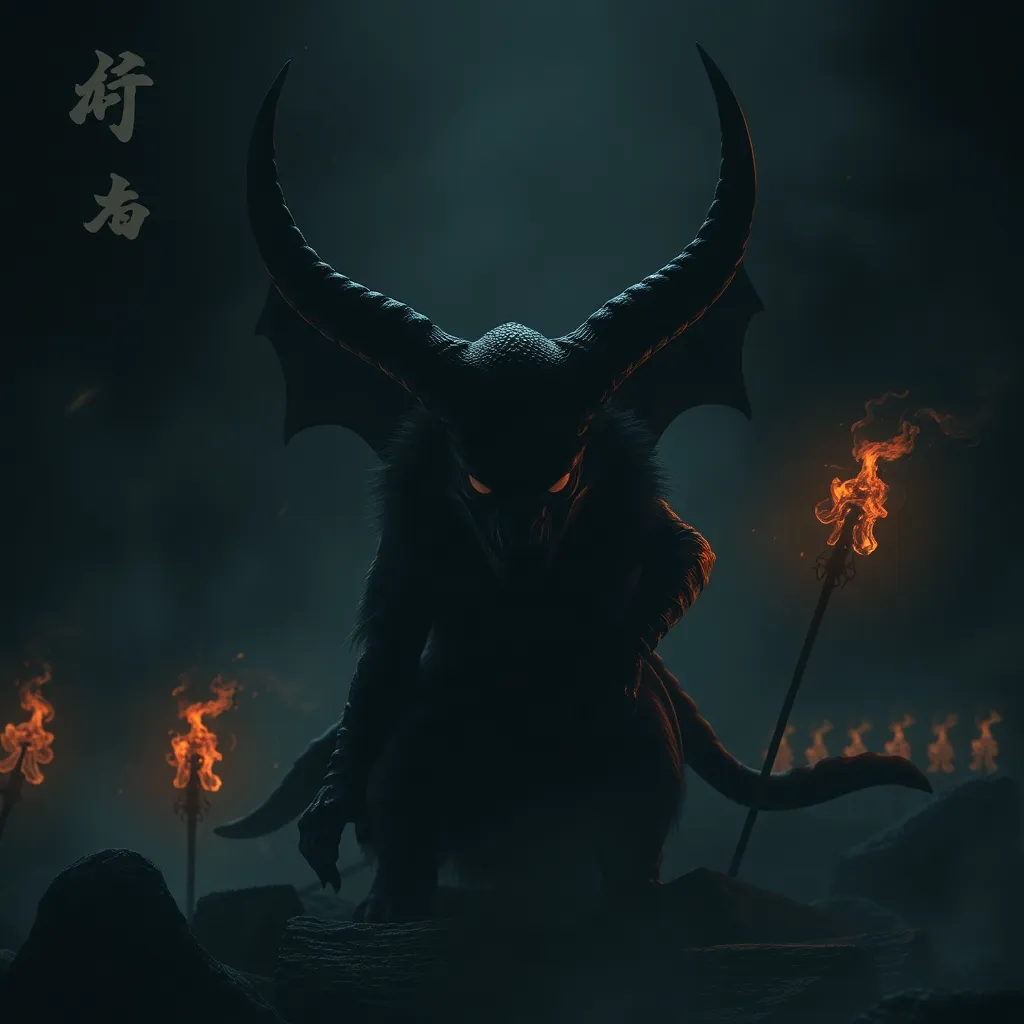Exorcising the Dybbuk: Rituals, Prayers, and the Fight for Redemption
I. Introduction
The Dybbuk is a fascinating and complex figure in Jewish folklore, often described as a restless spirit of a deceased person that possesses the living. This entity is deeply rooted in Jewish mysticism and has emerged as a significant cultural motif over centuries. The Dybbuk is not just a story, but a representation of the spiritual struggles and afflictions that can befall individuals.
Exorcism rituals hold great importance in addressing these spiritual afflictions, providing a framework for confronting and ultimately overcoming the malevolent forces of the Dybbuk. This article will explore the rituals, prayers, and the overarching theme of redemption associated with the exorcism of the Dybbuk, shedding light on its historical and cultural significance.
II. The Origins and Significance of the Dybbuk
The Dybbuk is believed to have originated in the 16th century within Jewish mystical texts, particularly the Kabbalah. It is characterized by its ability to possess a living person, often seeking to fulfill unfinished business or unresolved emotional conflicts from its past life.
- Historical context: The Dybbuk is often linked to the teachings of the Jewish mystic Isaac Luria, who emphasized the connection between the living and the dead.
- Characteristics: Dybbuks are known for their distinct personalities and may exhibit behaviors that reflect their former lives. Their purpose often revolves around seeking closure or revenge.
- Cultural representations: The Dybbuk has been depicted in various forms, including literature, theater, and film, most notably in S. Ansky’s play “The Dybbuk” (1920), which explores themes of love and loss.
III. Understanding Possession: The Symptoms and Signs
Possession by a Dybbuk can be understood through both psychological and spiritual lenses. While some may interpret these experiences through the framework of mental health, others view them as genuine spiritual encounters.
- Psychological vs. spiritual interpretations: Modern psychology may label symptoms of possession as manifestations of trauma or mental illness, while traditional views see them as signs of spiritual unrest.
- Common symptoms: Individuals believed to be possessed may exhibit behaviors such as sudden personality changes, speaking in unknown languages, or displaying knowledge of past events that they could not possibly know.
- Case studies: Numerous testimonies exist from individuals and families who believe they have experienced Dybbuk possession, detailing their struggles and the subsequent exorcism efforts.
IV. The Role of Rituals in Exorcism
Exorcism rituals in Jewish culture are steeped in tradition and spiritual significance. They serve as a means to confront and expel the Dybbuk from the afflicted individual.
- Overview of traditional practices: Rituals often involve a rabbi or spiritual leader, who guides the process of purification and healing.
- Significance of the Shofar: The Shofar, a ram’s horn, is traditionally blown during exorcisms to awaken the spirit and call for divine intervention.
- Steps of a Dybbuk exorcism: A typical ceremony may include prayers, the recitation of sacred texts, the use of ritual objects, and communal support from the community.
V. Prayers and Incantations: Tools for Redemption
Prayers and incantations are central to the exorcism process, acting as powerful tools for redemption and healing.
- Key prayers: Specific prayers, such as the “Mi Sheberach” for healing and the “Kaddish” for the dead, are commonly used to invoke divine assistance.
- Power of collective prayer: The involvement of the community in prayer enhances the spiritual power of the exorcism, creating a supportive environment for the afflicted.
- Hebrew texts and sacred songs: Chanting sacred Hebrew texts and songs during the ceremony fosters a connection to the divine and reinforces the intention to rid the individual of the Dybbuk.
VI. Psychological and Spiritual Implications of Exorcism
The impact of exorcism on an individual’s mental health can be profound, as it often brings about a sense of relief and renewed hope.
- Impact on mental health: Many individuals report a significant improvement in their mental state post-exorcism, suggesting that the ritual can serve as a form of catharsis.
- Spiritual healing: The concept of redemption is central to the exorcism process, allowing individuals to reclaim their sense of self and restore their spiritual well-being.
- Ethical considerations: The practice of exorcism raises ethical questions about the treatment of mental health issues and the responsibility of spiritual leaders.
VII. Modern Interpretations and Adaptations
In contemporary society, approaches to Dybbuk exorcisms have evolved, integrating modern psychological insights with traditional practices.
- Contemporary approaches: Various communities are adapting exorcism rituals to incorporate therapeutic elements, blending spirituality with psychological support.
- Influence of modern psychology: The integration of psychological techniques in exorcism practices reflects a growing understanding of mental health and spiritual well-being.
- Case studies: Recent exorcisms have showcased the evolution of these practices, with modern narratives highlighting both traditional beliefs and contemporary methodologies.
VIII. Conclusion
Exorcising the Dybbuk holds significant cultural and spiritual importance, reflecting the deep-rooted beliefs in the battle between good and evil. The rituals and prayers associated with these exorcisms provide a framework for addressing spiritual crises and seeking redemption.
The ongoing relevance of these practices speaks to humanity’s enduring struggle with the unseen forces that affect our lives. Ultimately, the journey towards redemption and healing through the exorcism of the Dybbuk is a powerful testament to the resilience of the human spirit.



